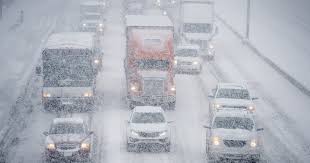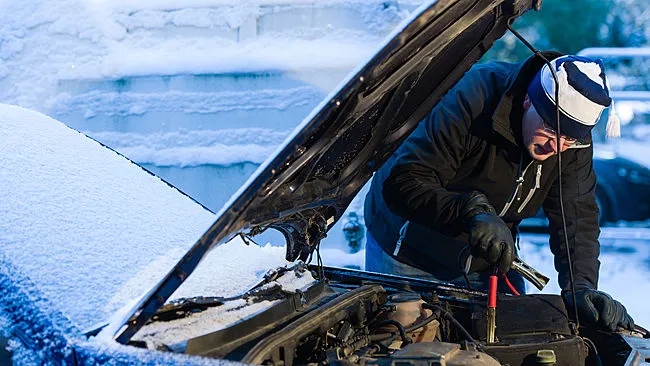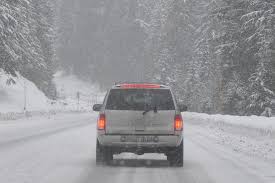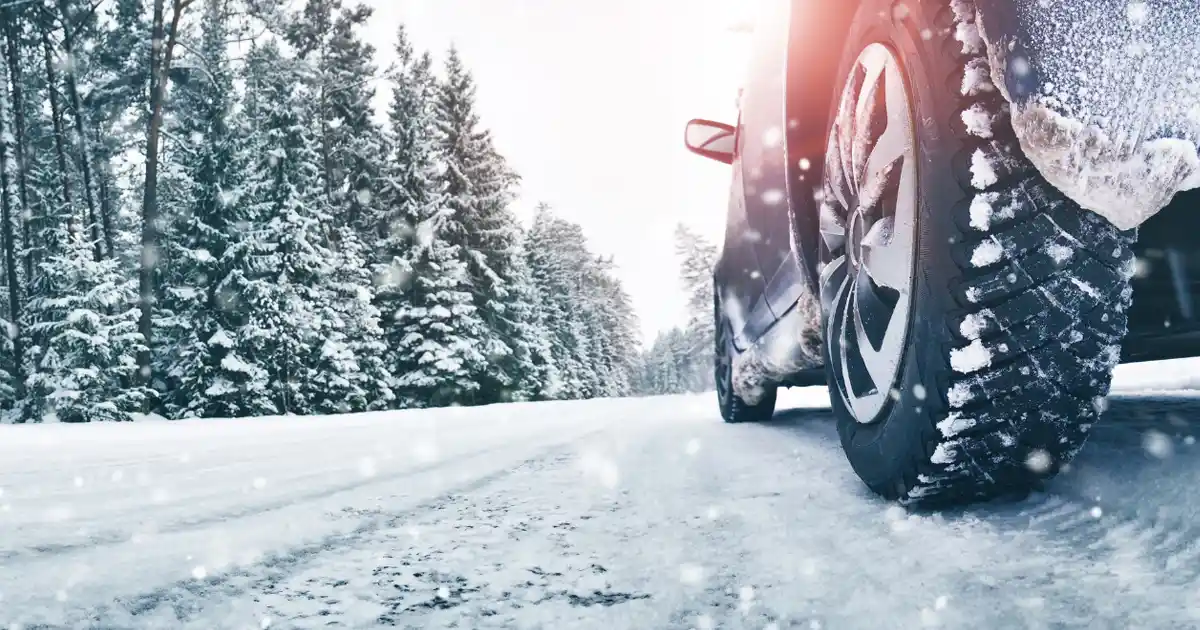Winter driving in the Midwest can be challenging and unpredictable, with icy roads, blizzards, and freezing temperatures making daily commutes and road trips more hazardous. Knowing how to drive safely in Midwest winters can help prevent accidents and ensure you reach your destination without incident. It is also crucial to inform others about your route and anticipated arrival time when planning trips in winter conditions.
This Midwest winter road safety guide provides essential tips for navigating snow-covered roads, handling black ice, and winterizing your vehicle for the harshest conditions.
🚗 How to Prepare Your Car for Midwest Winter
Before winter sets in, preparing your vehicle is crucial to ensure safe driving in snow and ice conditions. Installing snow tires is essential for better traction and control. It's also important to review tire safety ratings from the National Highway Traffic Safety Administration before purchasing new tires.
1. Install the Best Winter Tires for Midwest Driving
One of the best winter driving practices for icy roads is upgrading to snow tires designed for better traction, braking, and stability. Snow tires provide superior traction in icy and snowy conditions, significantly improving a vehicle's performance and safety compared to all-season tires.
✔ Best Winter Tires for Midwest Snow and Ice:✅ Bridgestone Blizzak WS90 ✅ Michelin X-Ice Snow ✅ Goodyear Ultra Grip Ice WRT ✅ Nokian Hakkapeliitta R3
💡 Tip: If you drive in areas with extreme cold and heavy snowfall, studded winter tires may provide extra grip. Before making a purchase, check tire safety ratings from the National Highway Traffic Safety Administration to ensure optimal tire selection.
2. Check and Maintain Your Car Battery
Cold weather can drain your car battery faster than usual. Have your battery tested and replaced if it’s over 3-5 years old.
✔ Winter Car Battery Maintenance Tips:
✅ Test your battery’s charge before temperatures drop.
✅ Keep jumper cables in your vehicle in case of emergencies.
✅ If possible, park in a garage to keep your battery from freezing.
3. Keep an Emergency Kit in Your Car
Winter weather can cause road closures and unexpected delays. Always have an emergency kit in your vehicle.
✔ Essential Items for a Winter Emergency Kit:
✅ Ice scraper and snow brush
✅ Jumper cables
✅ Flashlight with extra batteries
✅ Blanket and warm clothing
✅ Non-perishable snacks and bottled water
✅ First aid kit
✅ Bag of sand or cat litter (for traction)
✅ Snow shovel

Winter Driving Tips and Safe Driving Techniques for Extreme Cold Conditions
Knowing how to handle your vehicle on icy roads can reduce the risk of skidding, accidents, or getting stuck. It is also crucial to avoid risky driving behaviors, such as texting while driving and driving under the influence of alcohol or drugs, as these actions negatively impact key driving skills like coordination and judgment.
1. Drive Slowly and Keep a Safe Distance
✔ Reduce speed and increase following distance to allow extra braking time. ✔ Brake gently to avoid skidding. Proper operation of the brake pedal is crucial for vehicle safety and control during winter driving. ✔ If your car has anti-lock brake systems (ABS), apply steady pressure. ABS helps maintain tire grip and is particularly useful in assessing traction and responding appropriately to slippery conditions. ✔ Use low gears to maintain traction when driving downhill.
2. How to Handle Black Ice and Slippery Roads
Black ice is one of the biggest hazards on Midwest roads. It’s nearly invisible, so staying cautious is key.
✔ What to Do If You Hit Black Ice:
✅ Do NOT slam on the brakes. This can cause your vehicle to spin out.
✅ Keep the steering wheel straight. If your rear wheels slide, turn gently in the direction of the skid.
✅ Ease off the accelerator. Let the car slow down naturally until you regain traction.
3. Stay in Your Lane and Follow Plowed Roads
✔ Stick to main roads and highways that are regularly salted and plowed.
✔ Avoid sudden lane changes, which can cause loss of control.
4. Know When to Stay Off the Road
✔ If a blizzard warning or dangerous road conditions are in effect, stay home unless travel is absolutely necessary.
✔ Check local weather apps and road condition reports before leaving.
Best Vehicles for Safe Winter Driving in the Midwest
Some vehicles perform better than others in snowy and icy conditions. Here are some of the best vehicles for safe winter driving:
✔ Best SUVs for Midwest Winter Driving:
✅ Toyota RAV4 AWD – Reliable, fuel-efficient, and great all-wheel-drive performance.
✅ Jeep Grand Cherokee 4x4 – Built for rugged winter terrain.
✅ Ford Explorer AWD – Spacious and packed with winter-driving features.
✔ Best Sedans for Midwest Winter Driving:
✅ Toyota Camry AWD – Reliable with great winter handling.
✅ Honda Accord w/ Snow Mode – Smart traction control for better stability.
✔ Best Trucks for Snow and Ice:
✅ Ford F-150 4x4 – Powerful traction with 4WD options.
✅ Chevrolet Silverado 1500 4WD – Durable with advanced traction control.
✅ Toyota Tacoma 4x4 – Excellent off-road capabilities for Midwest backroads.
💡 Tip: Look for vehicles with heated seats, heated steering wheels, and remote start for extra comfort in winter!

Winter Car Maintenance and Tire Pressure Check for Midwest Drivers
Routine winter vehicle maintenance can keep your car in peak condition during the cold months. It's crucial to have an adequate supply of windshield wiper fluid, particularly with winter conditions in mind, to ensure optimal visibility during snowstorms.
✔ Winter Car Maintenance Checklist:
✅ Check antifreeze and coolant levels – Prevents the engine from freezing.
✅ Replace windshield wipers – Ice-resistant blades work best in snowy conditions.
✅ Use winter-grade oil – Helps with cold starts and engine efficiency.
✅ Check tire pressure frequently – Cold air causes tire pressure to drop.
🚗 Where to Get Winter Car Maintenance Near Me:
🔹 Schedule a winter vehicle checkup at a trusted local service center.
🔹 Visit a dealership or auto repair shop for a full winter safety inspection.
Safe Driving Routes & Midwest Winter Road Safety Guide
Not all roads are equally maintained in winter. Some highways are better plowed and salted than others. It is also crucial to carry a spare tire and ensure it is easily accessible to avoid any delays in case of emergencies.
✔ Best Midwest Highways for Safe Winter Travel:
✅ I-90 / I-94 (Illinois, Wisconsin, Minnesota) – Regularly salted and plowed.
✅ US Route 41 (Chicago to Milwaukee) – Heavily maintained for commuters.
✅ I-35 (Kansas City to Minneapolis) – Major North-South highway, frequently cleared.
💡 **Tip:**Avoid backroads and rural highways during snowstorms – they take longer to get plowed and may lack cell service.
Find Winter-Ready Vehicles Near Me
🔹 Find the Best Winter-Ready SUVs and Trucks – Browse local dealerships for vehicles equipped for winter driving.
🔹 Test Drive Winter Vehicles – Experience all-wheel drive (AWD) and snow traction modes before buying.
🔹 Find Affordable Winter Tires and Maintenance Services – Get discounts on winter tires, battery checks, and fluid top-offs.

Stay Safe on Midwest Roads This Winter
Driving in the Midwest during winter months can be challenging, but with the right preparation, you can navigate icy roads safely.
✔ Winterize your car before the snow hits.
✔ Install winter tires and check your battery to avoid cold-weather issues.
✔ Use safe driving techniques to prevent accidents on slippery roads.
✔ Stick to well-maintained highways and check weather reports before driving.
🚗 Need a winter-ready vehicle? Visit a dealership near you and test drive an AWD SUV or truck today! Stay safe and drive smart this winter! ❄️



